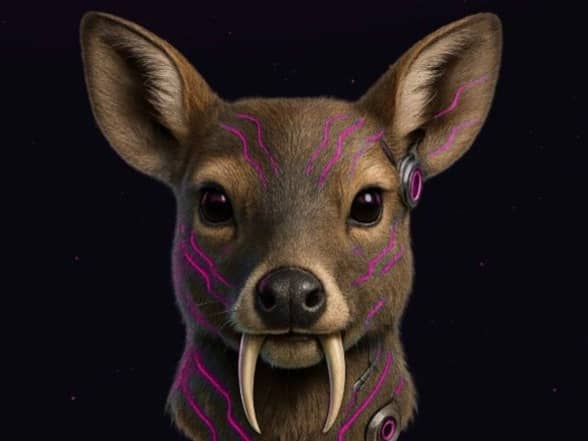订阅 wiki
Share wiki
Bookmark
Gorani
Gorani
Gorani,也被称为 The Gorani Games,是一个结合了人工智能和加密货币的真实寻宝游戏。该项目构建为一个另类现实游戏(ARG),玩家通过在线发布的线索找到隐藏在各个地点的实体信封。这些信封包含法定货币和该项目的原生数字代币$GORA形式的奖励。通过将现实世界的探索与基于区块链的奖励系统相结合,该游戏允许参与者在无需初始购买的情况下获得加密资产。[1] [2]
概述
Gorani是一款需要玩家探索物理环境的游戏,最初的重点是韩国首尔。其核心概念是“寻宝”,参与者通过线索找到隐藏的物品。该项目将在线互动与现实世界的活动相结合,在韩国高度互联的数字环境中运营。其既定目标是实现广泛采用,与其他基于位置的游戏相媲美,同时保持通货紧缩代币经济。[1]
该项目的品牌和传说围绕着“赛博獐子”展开,它是韩国水鹿的数字化版本,被描述为留下宝藏供玩家寻找。该游戏的口号是“追随光芒,加入寻宝”。该游戏采用分级奖励系统,级别越高,奖品越大,但需要玩家使用原生$GORA代币才能访问线索或参与。该系统将数字代币与现实世界的游戏玩法联系起来。该项目利用多个社交媒体平台,包括KakaoTalk、X(前身为Twitter)和TikTok,来传播线索并与其用户群进行沟通。[3] [1]
游戏机制
Gorani的游戏玩法被设计为一个三步流程,将在线解谜与现实世界的探索相结合。该游戏围绕一个分级系统构建,提供不断升级的奖励和挑战。[1]
游戏循环
该游戏的核心循环遵循玩家的独特顺序:
- 寻找线索: 玩家首先获取关于隐藏宝藏位置的提示和线索。这些线索通过各种官方渠道发布,包括项目网站上的专用“Gorani寻宝地图”,以及其KakaoTalk聊天群和其他社交媒体资料。
- 追随獠牙: 根据线索,玩家必须亲自前往指定的现实世界位置。该叙述鼓励玩家“追随光芒”或赛博獐子的“闪亮獠牙”来找到隐藏的信封。
- 扫描并领取: 一旦玩家找到实体信封,它包含一个唯一的、一次性使用的二维码。第一个扫描代码的玩家成功领取奖品,这将相关的现金和$GORA代币奖励锁定到他们的帐户中。
此游戏循环旨在为多次寻宝活动重复进行。[1]
奖品等级
该游戏采用分级奖励系统构建,级别越高,奖品越大,但可能需要玩家使用$GORA代币才能参与或获得线索。[1]
- 1级: 这是一个免费访问层级。奖励通常包括30,000韩元至50,000韩元的现金,以及12,000个$GORA代币。此级别的线索是免费提供的。
- 2级: 要访问此级别的提示,玩家必须销毁$GORA代币。奖励更高,范围从70,000韩元到100,000韩元和20,000个$GORA。每个提示需要销毁500个$GORA。
- 3级: 此级别提供最大的奖品,从300,000韩元到3,000,000韩元和30,000个$GORA。访问涉及“拆分代码”,每个提示需要销毁1,000个$GORA。
这种不断升级的奖励结构旨在吸引休闲玩家和专注玩家。[1] 用户发布寻宝视频博客和社交图片也有额外奖励。
系统架构和技术
Gorani项目结合了人工智能和区块链技术,以促进其游戏玩法和经济模型。[1]
核心组件
该系统建立在三个主要组件之上:
- Gorani AI: 一种人工智能系统,用于分析和评分潜在的宝藏位置,基于诸如人流量、公共安全和新颖性等标准。
- 领取服务: 一种后端服务,用于在扫描时验证每个唯一的二维码,并将$GORA代币的链上转移执行给获胜者。
- 提示聊天: 一种可在网络上和通过KakaoTalk使用的交互式聊天服务,用户可以在其中销毁$GORA代币以请求有关活跃寻宝活动的更多线索。[1]
区块链集成
Gorani通过其原生加密货币$GORA代币利用区块链技术,该代币在Fraxtal区块链上运行。该代币既是玩家的奖励,也是访问某些游戏内功能所需的实用工具。[1] [2]
代币经济学
Gorani的经济模型以其原生实用代币$GORA为中心。该代币旨在成为游戏生态系统中不可或缺的一部分,并具有通货紧缩的供应机制。该项目声明,“$GORA不仅仅是一个奖品,它是您参与更大规模寻宝、独家线索和社区力量的门票。”[1]
分配和归属
- 奖金池: 20%
- 边玩边赚: 45%,仅通过游戏内寻宝活动发布。
- 流动性和上市: 20%
- 团队: 10%,有一年的悬崖期,随后是两年的归属时间表。
- 社区赠款: 5%
代币分配旨在支持游戏的奖励系统和长期增长。[1]
实用性
$GORA代币在Gorani生态系统中具有多个明确的功能:
- 访问高级寻宝活动: 玩家需要持有和销毁$GORA才能参与更高奖励的2级和3级寻宝活动。
- 购买独家线索: 对于高级寻宝活动,玩家必须花费$GORA才能获得帮助他们找到宝藏的提示。
- 社区治理: 该代币旨在赋予持有者在项目开发和社区决策中的发言权。
- 对未来投放进行投票: 持有者可以使用他们的代币对未来宝藏投放的位置或主题进行投票,直接影响游戏的发展。
这些实用程序旨在为游戏生态系统中的代币创建用例。[1]
销毁机制
$GORA代币采用通货紧缩模型设计,以管理其总供应量。这是通过“销毁”机制实现的,其中用于某些游戏内交易的代币将永久从流通中移除。触发代币销毁的活动包括:
- 提示请求: 玩家销毁$GORA以获得更高级别寻宝活动的线索。对于2级寻宝活动,一个提示花费500 $GORA,对于3级寻宝活动,每个提示的成本为1,000 $GORA。
- 大奖: 要解锁高级信封,玩家可能需要组合两个半代码并销毁5 $GORA。
- 难度投票: 质押的代币可用于对未来寻宝活动的参数进行投票,例如信封频率和价值,这也涉及销毁机制。
根据该项目,“每个提示、高级信封和未来投放投票都会销毁$GORA,从而推动健康的通货紧缩经济。”该机制旨在随着时间的推移减少$GORA的总供应量。[1]
治理
计划于2026年第一季度推出一个轻量级去中心化自治组织(DAO)。通过此DAO,代币持有者将能够对游戏的关键运营方面进行投票,包括奖金预算、扩展到新城市以及经济参数,例如提示的代币销毁成本。治理结构还将包括一个监护人功能,该功能可以在发生紧急情况或安全漏洞时暂停领取服务最多一周。[1]
安全和反作弊
该项目已实施多项措施,以确保公平竞争并保护游戏资产:
- 二维码: 在信封中找到的每个二维码均为一次性使用,并经过加密以防止重复或未经授权的领取。
- 机器人限制: 该系统使用速率限制和验证码来阻止自动机器人获取奖励。
- 审计: 管理代币和领取服务的智能合约将在主网启动前接受安全审计。[1]
路线图
该项目概述了其开发和扩展的多阶段路线图。[1]
- 2025年第三季度: 2025年第三季度的路线图包括在首尔推出最小可行产品(MVP),并向Upbit加密货币交易所提交上市申请。
- 2025年第四季度: 在2025年第四季度,该项目计划发布其“销毁换提示”功能的第2版,并将其运营扩展到釜山和仁川市。
- 2026年第一季度: 2026年第一季度计划启动该项目的去中心化自治组织(DAO),以及在东京和台北的首次国际寻宝活动。
- 2026年第二季度: 2026年第二季度的计划包括开发可选的增强现实(AR)叠加应用程序以及集成物联网(IoT)信标。
该路线图概述了该项目在技术开发、地域扩张和社区治理方面的计划。[1]
风险和合规
该项目已确定了几个潜在风险,并概述了解决这些风险的合规策略。[1]
- 彩票法: 为了遵守法规,进入游戏是免费的,并且谜题的设计需要技巧而不是机会。该项目表示,在新的司法管辖区启动之前,它会进行法律审查。
- 人群控制: 为了管理公共安全并防止过度拥挤,该游戏将每个区域的活跃投放数量限制为最多十个。线索也交错排列,并在必要时与当地警方协调。
- 价格波动: 该代币的经济模型(包括固定供应和销毁机制)旨在减少抛售压力并减轻价格波动。
- 信封盗窃: 防止实体奖品信封被盗的安全措施包括要求安置人员签署保密协议(NDA),并在供应箱上使用GPS跟踪器。
这些措施旨在确保游戏安全、可靠地运行,并符合当地法律。[1]
发现错误了吗?
